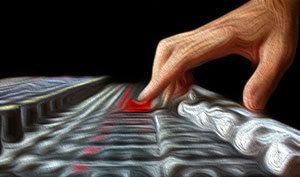Mixing Music: The Art And the Science

Obviously it reminds us that mixing music is a combination of art and science. But from my point of view, the science – or put another way, the methods and reasons for those methods – come first. Otherwise we wouldn’t have as many brushes and paints and palettes and easels (OK, you see I’m running with the “art” metaphor here:)) to create the art we envision.
Fortunately the author, Bruce Kaphan, gives plenty of useful concrete tips to create better mixes, such as his typical pan settings for drum kits and other instruments, how he begins a mixing session, etc.
One other thing that comes through in the article is the presupposition that there will be three distinct people involved in a music recording project: the person recording and preparing the tracks (recording engineer), the person mixing the project (the mix engineer), and the person mastering the project (the mastering engineer). See our post
Recording Engineer, Mix Engineer and Mastering Engineer – Oh My for more information on what the heck I mean by all that.
Anyway, do yourself a favor if you mix music and get thee to this article, which you can read in its entirety here: https://www.recordingmag.com/resources/resourceDetail/122.html

Thanks Ken, a great link and read and some very handy tips in there.
One of the things I’m always trying to get new guys to do is to keep a notebook with them at all times, and to fill it up with all the little mixing techniques they read about as they learn along the way. It was something I used to do – it’s like having your own mini guidebook with you that you can reference whenever you get stuck. Some of the pan and EQ settings in the article reminded of that.
Rich.